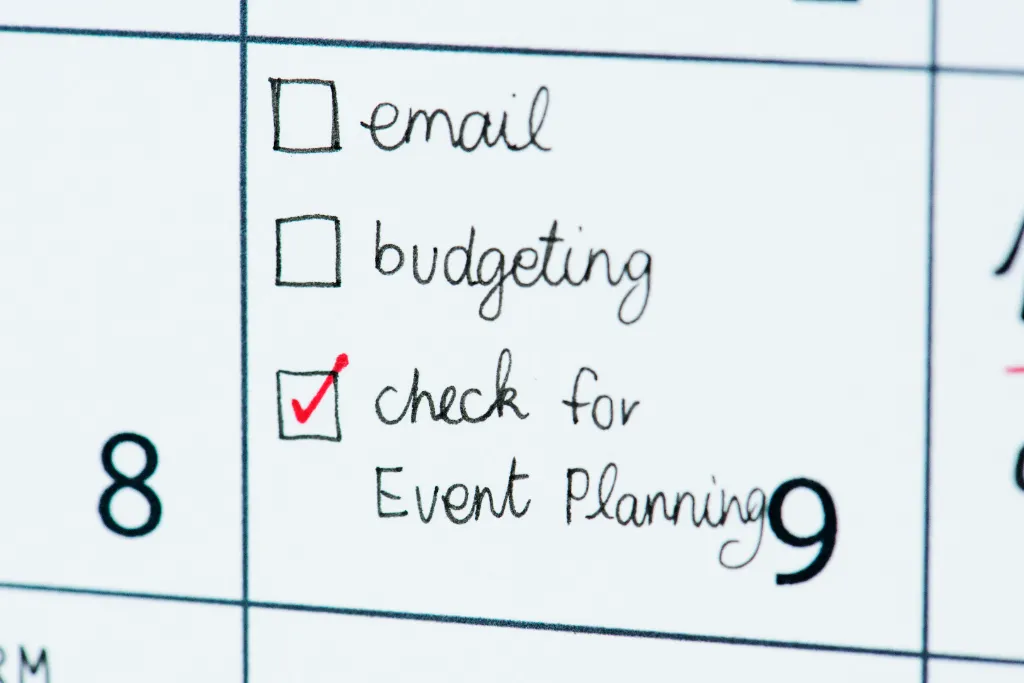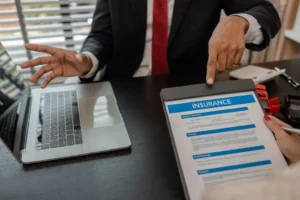Planning a nonprofit event has never been more important for charities, community groups, and NGOs across the UK. Fundraising events remain one of the most powerful ways to engage donors, raise awareness, and secure vital income streams — but they also come with unique challenges. From compliance with UK fundraising regulations to managing hybrid formats and volunteer coordination, success depends on careful planning and execution.
In today’s climate of rising costs, increased competition for donations, and heightened public scrutiny, poorly planned events can damage reputations and waste limited resources. On the other hand, a well-organised event can create lifelong supporters, attract corporate sponsorship, and showcase your mission to a wider audience. Whether you’re hosting a gala dinner in London, a local community fun run, or a virtual fundraising webinar, the steps you take in the early planning stages will shape the outcome.
This comprehensive guide explores the essential steps in nonprofit event planning. We’ll cover everything from building a fundraising event checklist UK, to budgeting for nonprofit events, assigning team roles in event planning, and navigating legal requirements and permits for nonprofit events. You’ll also discover practical advice on choosing the right venue and date, leveraging event marketing and promotion, coordinating volunteers effectively, and maximising engagement through sponsorship and donor support.
Our focus is the UK context, ensuring you understand not only global best practices but also the local compliance and fundraising regulations overseen by bodies such as the Fundraising Regulator and Charity Commission.
At NGO Finance Hub, we know that successful events don’t just happen by chance. They are the result of robust planning, transparent financial management, and effective reporting. That’s why we support nonprofits with tailored ngo financial management, our NGO finance course, and hands-on financial management for NGOs training — giving event organisers the tools to stay compliant, inspire donor confidence, and achieve long-term sustainability.
Planning a nonprofit event steps: Building the foundation for success
Every successful fundraiser begins with clear and structured nonprofit event planning steps. Without a roadmap, even the most exciting idea risks falling apart under the weight of logistics, compliance, and financial pressure. In the UK, where charities and community groups are expected to demonstrate accountability and transparency, proper planning is not just good practice — it’s essential.
Define your purpose and objectives
The very first step is to answer: Why are we organising this event? Is the goal to raise a specific amount of money, attract new donors, build awareness, or engage volunteers? Setting SMART goals — Specific, Measurable, Achievable, Relevant, and Time-bound — ensures that your event has direction. For example, “Raise £10,000 to fund a new mental health support programme by attracting 200 attendees to a charity dinner in Manchester.”
Identify your target audience
Knowing who you are trying to reach is as important as knowing what you want to achieve. An elegant gala may appeal to corporate donors, while a fun run or music festival could be perfect for engaging young supporters and local families. Tailoring your event to your audience boosts attendance and ensures your message resonates.
Create a clear timeline
Events require dozens of moving parts — from securing venues to recruiting volunteers and launching marketing campaigns. Building a timeline that begins six to twelve months in advance helps avoid last-minute chaos. Break down major milestones: venue booking, sponsorship pitches, ticket sales, promotional campaigns, and volunteer training.
Align with your mission and brand
Every nonprofit event should reflect the organisation’s values and mission. For example, an environmental NGO should consider eco-friendly venues and sustainable catering. This not only reinforces credibility but also deepens trust with supporters.
Build in compliance and governance
In the UK, fundraising events must adhere to regulations set by the Fundraising Regulator and Charity Commission. From handling donations securely to ensuring correct insurance, integrating compliance into the planning process prevents reputational and legal risks.
FAQ: What are the key initial steps in planning a nonprofit event?
The key initial steps include defining SMART objectives, identifying your target audience, creating a timeline, and embedding compliance early. These steps ensure your event is not only exciting but also effective, legal, and mission-driven.
Fundraising event checklist UK: Step-by-step preparation
A fundraising event checklist UK is one of the most powerful tools for nonprofit organisers. It transforms overwhelming tasks into a clear sequence, ensuring nothing is missed from concept to completion. In 2025, with regulations tightening and donor expectations rising, following a structured checklist can be the difference between a successful fundraiser and a costly mistake.
Step 1: Define your fundraising goal
Begin with a specific, measurable goal. For example: “Raise £15,000 to expand youth mentoring programmes in London.” This becomes the anchor for all other decisions, from ticket pricing to sponsorship packages.
Step 2: Set a budget framework
Establish estimated costs for venue, catering, marketing, permits, insurance, technology, and staffing. Then identify income sources such as ticket sales, online donations, raffles, and corporate sponsorships. This keeps the event financially realistic.
Step 3: Assemble your planning team
Assign roles early — project manager, logistics, finance, sponsorship, marketing, and volunteer coordination. Smaller nonprofits may combine responsibilities, but clarity prevents confusion later.
Step 4: Secure venue and date
Book a venue at least six months in advance and confirm necessary permits. Check for accessibility, transport links, and conflicts with other major events in your area.
Step 5: Apply for licenses and permits
In the UK, events may require public entertainment licenses, food hygiene certificates, alcohol sale permissions, or charity collection permits. Failing to secure these could result in fines or cancellation.
Step 6: Plan marketing and promotion
Use a multi-channel approach — email campaigns, social media, local press, and partnerships with community influencers. Start at least three months before the event to build momentum.
Step 7: Recruit and train volunteers
Volunteers are the backbone of most nonprofit events. Provide training so they understand roles, safety protocols, and donor engagement strategies.
Step 8: Execute financial controls
Set up systems for ticket sales, cash handling, and online donations. This ensures accountability and protects your charity’s reputation.
Step 9: Post-event follow-up
Thank donors, sponsors, and volunteers promptly. Share event highlights, report on funds raised, and publish transparent financial summaries.
FAQ: How do you set clear goals and measurable targets for nonprofit events?
Set SMART goals aligned with your mission. For instance, instead of saying “raise money for our cause,” specify “raise £5,000 through ticket sales and £10,000 through corporate sponsorship by attracting 250 attendees.” This precision allows you to track progress and report back to donors effectively.
Budgeting for nonprofit events: Managing costs and maximising returns
Successful fundraising depends on effective budgeting for nonprofit events. Without a clear financial plan, even the most popular event can result in losses or reputational damage. In the UK, where donors expect transparency and regulators demand accountability, building a detailed event budget is not optional — it’s essential.
Identify core expense categories
Start by listing your major cost areas:
- Venue hire and associated costs (cleaning, security, utilities).
- Catering and hospitality, especially if meals, drinks, or refreshments are provided.
- Marketing and promotion, including print, digital, and PR campaigns.
- Technology for virtual or hybrid events (streaming platforms, ticketing software).
- Licenses and permits (alcohol sales, raffles, public entertainment).
- Insurance, including public liability and event cancellation.
- Staffing and volunteer support, such as training and uniforms.
Match expenses with income streams
An event budget must also account for potential income. Consider:
- Ticket sales or entry fees.
- Sponsorship packages.
- Donations before, during, and after the event.
- Raffles, auctions, or merchandise sales.
- Online giving campaigns integrated with the event.
Balancing these streams ensures your event is financially viable.
Create best-case and worst-case scenarios
Always plan for contingencies. Prepare a conservative income forecast (worst-case) alongside an optimistic one (best-case). This approach helps trustees and sponsors feel confident that risks are under control.
Monitor cash flow before, during, and after
Event budgets are not static. Track spending regularly against projections and update forecasts as ticket sales and sponsorships come in. This avoids surprises and allows quick adjustments.
FAQ: What budget items should be considered, and how to fundraise effectively?
Budget items include venue, catering, marketing, technology, permits, insurance, and staffing. To fundraise effectively, diversify income sources by combining ticket sales with sponsorships, online giving, and community fundraising. Ensure transparency by publishing post-event accounts, which strengthens donor trust.
Build in financial accountability
Donors and regulators want proof that funds are used responsibly. Use a dedicated bank account for the event, issue receipts for all donations, and appoint a finance lead responsible for oversight.
At NGO Finance Hub, we help organisations align event budgets with broader ngo financial management strategies. Our NGO finance course and financial management for NGOs training provide practical tools for accurate forecasting, donor reporting, and financial sustainability.
Team roles in planning a nonprofit event : Building an effective organising committee
No nonprofit event succeeds without the right people behind it. Clearly defined team roles in event planning ensure that every task has an owner, deadlines are met, and no critical responsibility falls through the cracks. In the UK, where compliance, financial accountability, and donor trust are essential, building the right team is just as important as choosing the venue or setting the budget.
Key leadership role: The event manager
At the centre of every event is the event manager or project lead. This person oversees the entire process — from goal setting to post-event evaluation. They coordinate with trustees, liaise with sponsors, and ensure the event stays aligned with the organisation’s mission.
Finance officer: Guardian of transparency
A dedicated finance officer is vital. Their role is to manage the budget, oversee ticket sales and donation systems, and ensure compliance with Charity Commission and Fundraising Regulator requirements. By keeping meticulous records, they provide the financial transparency donors expect.
Logistics and operations lead
This role handles the nuts and bolts: booking venues, organising catering, arranging insurance, and making sure permits are secured. They also oversee accessibility and health & safety measures, which are critical for compliance in the UK.
Marketing and communications lead
Promotion determines attendance and fundraising success. A communications lead manages social media campaigns, press releases, website updates, and donor communications. They ensure consistent messaging that connects with both local communities and corporate sponsors.
Volunteer coordinator
Volunteers are often the backbone of nonprofit events. A dedicated coordinator recruits, trains, and manages volunteers, ensuring they understand roles, responsibilities, and health & safety protocols.
Sponsorship and donor relations officer
This role focuses on securing sponsors, engaging major donors, and building long-term partnerships. They design sponsorship packages, manage recognition, and handle donor follow-up after the event.
FAQ: What roles are essential in an event planning team?
At minimum, essential roles include: event manager, finance officer, logistics lead, marketing lead, volunteer coordinator, and sponsorship officer. Small nonprofits may combine some roles, but each responsibility must still be clearly assigned to ensure accountability.
Choosing venue and date for planning a nonprofit event : Setting the stage for success
One of the most strategic decisions in choosing venue and date for nonprofit events is finding the balance between accessibility, cost, and audience appeal. The wrong choice can limit attendance, increase expenses, or clash with competing events — while the right decision can elevate your fundraiser’s impact and credibility.
Venue selection criteria
When selecting a venue, consider:
- Accessibility: Is it easy for your target audience to reach by public transport or car? Does it provide disabled access and facilities?
- Capacity: Will the space comfortably accommodate your expected number of guests, plus room for activities like auctions, catering, or entertainment?
- Facilities: Check for AV equipment, Wi-Fi, parking, and breakout spaces. For hybrid events, ensure reliable livestreaming capacity.
- Cost and availability: Venues can consume a large share of your budget, so always compare multiple options and ask about nonprofit discounts.
Matching venue to event type
Different events demand different venues. A gala dinner may require a hotel ballroom, while a charity fun run needs open public space with permits. Community centres, schools, and places of worship often offer affordable, mission-aligned spaces for smaller nonprofits.
Choosing the right date
The date is just as critical as the venue. Avoid clashes with major holidays, sporting events, or other charity fundraisers in your region. Consider donor availability — for example, professionals may prefer evening galas, while families may attend weekend fairs.
Plan well in advance
Secure your venue and date at least six months ahead, and ideally a year in advance for large-scale events. Early booking ensures availability and often provides better pricing.
FAQ: How do you select the best date and venue for your event?
The best venue is one that balances accessibility, capacity, facilities, and cost, while aligning with your audience and mission. The best date avoids conflicts with other events, fits donor schedules, and allows sufficient lead time for promotion and ticket sales.
Event marketing and promotion: Driving attendance and donor engagement
No matter how well-planned an event is, it cannot succeed without effective event marketing and promotion. For UK nonprofits in 2025, marketing is not just about filling seats — it’s about building donor relationships, telling your story, and showing impact.
Craft a clear message
Start with a compelling narrative that explains why your event matters. Instead of “annual dinner,” say “Join us to raise £20,000 to provide 500 food parcels for families this winter.” Storytelling creates emotional connections and motivates action.
Use multi-channel promotion
Leverage a blend of digital and offline tools:
- Social media campaigns on LinkedIn, Facebook, Instagram, and TikTok.
- Email marketing to your donor database with personalised invitations.
- Local press and radio to reach older or community-focused audiences.
- Partnerships with local businesses and influencers to amplify reach.
Create urgency and exclusivity
Offer early-bird tickets, limited VIP packages, or countdown campaigns. Urgency increases conversions and helps you meet budget targets faster.
Engage your audience before the event
Use teasers, behind-the-scenes posts, and fundraising milestones to build excitement. Interactive polls, videos, and testimonials from beneficiaries make donors feel connected before they even arrive.
Track and measure effectiveness
Monitor open rates, click-through rates, and ticket sales data. Adjust campaigns mid-way if engagement is low. Post-event, review which channels delivered the best ROI.
FAQ: What marketing strategies are effective for promoting nonprofit events?
Effective strategies include multi-channel promotion (social media, email, press), storytelling to connect with donors, and urgency tactics such as early-bird pricing. Tracking performance ensures resources are focused on the most effective channels.
Virtual and hybrid nonprofit events: Expanding reach in 2025
The rise of digital technology has transformed the way charities connect with donors. Virtual and hybrid nonprofit events are now a core part of fundraising strategies in the UK. They allow organisations to reach wider audiences, reduce costs, and make events more accessible. In 2025, blending online and in-person engagement isn’t just a backup plan — it’s often the most effective approach.
The benefits of virtual events
Virtual events lower barriers for participation. Donors and supporters can join from anywhere, cutting down on travel and venue costs. They are also more inclusive for individuals with disabilities or those living outside major cities. Webinars, online auctions, and livestreamed concerts are affordable options that can attract global audiences.
The rise of hybrid formats
Hybrid events combine the energy of in-person gatherings with the flexibility of digital access. For example, a charity dinner in London can also be streamed live, allowing donors abroad to bid in the auction or make real-time contributions. Hybrid formats are ideal for maximising reach while retaining personal connection.
Technology tools for engagement
Choosing the right platforms is essential. Options like Eventbrite, Zoom, Microsoft Teams, and Givebutter integrate ticketing, livestreaming, and donation management. Always test technology in advance to avoid disruptions. Engagement features such as live polls, chat, and gamification increase interaction and keep virtual audiences invested.
Challenges of digital events
While powerful, online events also require careful planning. Cybersecurity, data protection (GDPR compliance), and digital fatigue are real concerns. Nonprofits must balance innovation with accessibility and compliance.
FAQ: How to choose the right event format — in-person, virtual, or hybrid?
The right format depends on your audience, budget, and goals. In-person events build strong community ties, virtual events maximise reach and reduce costs, and hybrid formats offer the best of both worlds. Always consider donor accessibility, regulatory requirements, and mission alignment before deciding.
Sponsorship and donor engagement: Building lasting partnerships
Strong sponsorship and donor engagement strategies can turn a one-off event into a sustainable funding channel for your nonprofit. In the UK, where corporate social responsibility (CSR) is becoming a priority, businesses are eager to partner with charities that align with their values. At the same time, individual donors expect recognition, transparency, and personal connection.
Identifying sponsorship opportunities
Begin by mapping potential sponsors who share your mission. For example, a health charity could approach pharmaceutical companies, while an environmental group might target eco-conscious brands. Tailor your sponsorship proposals to highlight mutual benefits such as brand visibility, press coverage, and community impact.
Structuring sponsorship packages
Offer tiered options:
- Headline sponsor with branding across all event materials.
- Gold, Silver, and Bronze packages offering varying levels of exposure.
- In-kind sponsorships, such as donated catering, printing, or venue space.
Flexibility encourages businesses of all sizes to participate.
Engaging individual donors
Donors want to feel valued. Recognise contributions through event programmes, social media shoutouts, or exclusive invitations to behind-the-scenes briefings. Personalised thank-you notes and impact reports build long-term trust.
Using technology to boost engagement
Leverage donor management systems and event apps to track giving, send personalised updates, and encourage repeat donations. Live fundraising thermometers, auctions, and text-to-give campaigns keep supporters actively involved.
FAQ: How can nonprofits secure sponsorship and donor support?
Nonprofits can secure sponsorship by aligning with corporate CSR goals and offering clear benefits like visibility and brand association. Donor support is strengthened through recognition, transparent reporting, and personalised engagement that demonstrates real impact.
Beyond the event: Building relationships
The most successful fundraising events don’t end when the lights go out. Follow up with sponsors and donors, share transparent financial reports, and show how their contributions were used. This builds confidence and paves the way for future support.
Volunteer coordination for events: Harnessing people power effectively
Volunteers are the heart of most nonprofit fundraisers. Effective volunteer coordination for events ensures that your team feels valued, supported, and prepared to deliver a seamless experience for attendees and donors. In the UK, where many nonprofits rely heavily on unpaid support, strong coordination can make or break an event.
Recruiting the right volunteers
Start early by advertising opportunities through local volunteer centres, universities, and online platforms such as Do-it.org. Match roles to skills — for example, hospitality students may thrive on guest-facing duties, while finance students could help with donation tracking.
Training and preparation
Training is essential to avoid confusion and mistakes on the day. Provide clear role descriptions, safety protocols, and donor engagement guidelines. Even a one-hour induction can boost confidence and professionalism.
Creating a shift schedule
Volunteers should know when and where they are needed. A structured rota prevents gaps in coverage and ensures everyone has adequate breaks. Always assign backup support for key responsibilities like registration and donation handling.
Recognition and motivation
Volunteers aren’t motivated by money but by purpose and appreciation. Publicly thank them during the event, provide certificates, and follow up afterwards with personalised emails. Recognition fosters loyalty and encourages future involvement.
Integrating volunteers into the bigger picture
Help volunteers understand how their work connects to the mission. For example, telling registration staff “Your welcome today helps us raise funds to feed 300 families this winter” transforms their role from transactional to impactful.
FAQ: How to coordinate volunteers and ensure smooth event execution?
Recruit early, provide role-specific training, create clear schedules, and recognise contributions. Smooth execution depends on preparation and communication, supported by a volunteer coordinator who acts as the central point of contact.
Legal requirements and permits for nonprofit events: Staying compliant in the UK
Every UK charity or community group must consider legal requirements and permits for nonprofit events before finalising plans. Compliance not only prevents fines or cancellations but also protects your organisation’s reputation and donor trust.
Licensing for fundraising activities
If your event includes lotteries, raffles, or prize draws, you may need a license from your local council under the Gambling Act 2005. For small raffles held at the event, simpler rules may apply, but advance planning is essential.
Premises and alcohol licenses
Serving or selling alcohol requires a Temporary Event Notice (TEN) from your local authority. Venues may already hold these, but it’s your responsibility to confirm. Public events with live music or performances also require premises licenses.
Public liability insurance
Insurance is critical for covering accidents, injuries, or property damage. Most venues will require proof of insurance before confirming bookings, and it’s considered best practice for all fundraising events in the UK.
Health and safety obligations
Organisers must carry out risk assessments, ensuring safe crowd management, fire safety, food hygiene, and first aid provision. Noncompliance can lead to event shutdowns and legal consequences.
Charity Commission and Fundraising Regulator
Charities must ensure fundraising complies with Charity Commission guidance and the Fundraising Regulator’s Code of Fundraising Practice. This covers everything from how donations are collected to how data is handled under GDPR.
FAQ: What legal permits and licenses are required for fundraising events?
Permits may include Temporary Event Notices for alcohol, premises licenses for live performances, raffle licenses for lotteries, and proof of public liability insurance. Organisers must also comply with health & safety regulations, data protection laws, and Charity Commission requirements.
Staying ahead of compliance
Document everything — permits, risk assessments, and insurance policies — and assign a compliance officer within your planning team. This ensures nothing is missed and helps demonstrate accountability to trustees and sponsors.
Measuring success and post-event reporting: Proving impact and building trust
After the applause fades and the lights go down, the real work begins. Measuring success and post-event reporting are vital for nonprofits that want to demonstrate accountability, build donor trust, and improve future events. In the UK, transparent reporting is not only best practice — it’s an expectation set by donors, sponsors, and regulators.
Defining key performance indicators (KPIs)
Measure both financial and non-financial outcomes:
- Funds raised vs. target (e.g., did you meet your £20,000 goal?).
- Attendance figures and ticket sales.
- Donor acquisition — how many first-time supporters joined your cause?
- Engagement metrics, such as social media reach and press coverage.
- Volunteer satisfaction through surveys and feedback.
Creating a post-event financial report
Provide trustees and donors with a clear financial summary: income, expenses, net funds raised, and how the money will be used. Transparency here builds confidence and encourages repeat giving.
Gathering feedback for improvement
Send surveys to attendees, sponsors, and volunteers. Ask what worked well and what could be improved. This not only guides future planning but also shows supporters you value their voice.
Publicly sharing results
Publish a highlights report on your website and social channels. Share stories, photos, and testimonials alongside fundraising totals. This increases visibility and inspires ongoing support.
FAQ: How do you measure nonprofit event success?
Success is measured by comparing outcomes to your SMART goals. Financial results, attendance, donor engagement, and community impact all play a role. A transparent post-event report ensures accountability and strengthens donor relationships.
Tools and software for nonprofit event planning: Streamlining success
In 2025, technology is no longer optional for charities — it’s essential. Choosing the right tools and software for nonprofit event planning can save time, reduce costs, and improve donor engagement. From ticketing to financial reporting, digital solutions help nonprofits run professional events with fewer resources.
Event management platforms
Tools like Eventbrite UK, Eventify, and Cvent allow nonprofits to handle ticket sales, registrations, seating charts, and real-time attendee tracking. Many also integrate with donation systems, simplifying fundraising.
Donor and sponsor management
Customer Relationship Management (CRM) systems such as Salesforce Nonprofit Cloud and Bloomerang enable organisations to track donor history, personalise communications, and measure sponsorship ROI. This strengthens long-term relationships beyond a single event.
Virtual and hybrid event tools
Platforms like Zoom Events, Hopin, and Givebutter provide interactive features including livestreaming, breakout rooms, and fundraising thermometers — perfect for hybrid engagement.
Finance and reporting software
Robust accounting tools ensure transparency. QuickBooks for Nonprofits and Xero Charity Accounting integrate with event platforms, making it easier to reconcile accounts and report back to trustees and regulators.
Collaboration and volunteer coordination
Free or low-cost tools such as Slack, Trello, and Asana help teams coordinate logistics, assign roles, and track progress. Volunteer scheduling apps like RotaCloud keep shifts organised and minimise last-minute chaos.
FAQ: What software is best for nonprofit event planning?
The best software depends on your event type and budget. Eventbrite is excellent for ticketing, Salesforce Nonprofit Cloud for donor management, and QuickBooks or Xero for transparent financial reporting. Combining these tools creates a seamless, professional event experience.
Turning plans into impact
Effective planning a nonprofit event is about far more than logistics — it is about creating meaningful experiences that inspire donors, engage communities, and deliver real impact. In the UK, where transparency, accountability, and donor trust are paramount, events must combine creativity with compliance and financial discipline.
By following structured nonprofit event planning steps, building a clear fundraising event checklist UK, and implementing strong budgeting for nonprofit events, organisations can run fundraisers that are both inspiring and sustainable. The right team roles in event planning, careful venue and date selection, and strong event marketing and promotion ensure maximum attendance and visibility. Embracing virtual and hybrid nonprofit events expands reach, while focusing on sponsorship and donor engagement builds lasting partnerships. At the same time, effective volunteer coordination and strict adherence to legal requirements and permits for nonprofit events safeguard smooth execution.
Success doesn’t end when the event is over. Post-event evaluation, transparent reporting, and the right tools and software for nonprofit event planning allow charities to prove their impact and secure long-term donor loyalty.
At NGO Finance Hub, we know that great events require more than good intentions. They demand systems that protect every donation, demonstrate compliance, and build lasting financial resilience. That’s why we provide tailored ngo financial management, our NGO finance course, and practical financial management for NGOs training — empowering organisations to align event planning with robust financial practices.
If you’re ready to transform your fundraising events in 2025, visit ngofinancehub.com. Together, we’ll help you plan events that not only raise money, but also raise confidence in your mission, ensuring your nonprofit continues to grow, thrive, and deliver positive change.











